Using VR to Simulate Extreme Environments in Military Training
In the ever-evolving landscape of military training, virtual reality (VR) has emerged as a game-changer, offering an innovative approach to preparing soldiers for the rigors of combat. Imagine stepping into a world where you can experience the chaos of a battlefield, the unpredictability of extreme weather, or the pressure of a survival scenario—all without leaving the safety of a training facility. This is the power of VR. By immersing military personnel in hyper-realistic simulations, VR not only enhances their skills but also builds their confidence, ensuring they are ready to face any challenge that comes their way.
Gone are the days when soldiers had to rely solely on traditional training methods, which often come with significant risks and logistical challenges. With VR, they can practice their tactics in a controlled environment that mimics the unpredictability of real-life situations. This means they can make mistakes, learn from them, and refine their strategies without the fear of physical harm. It’s like having a safety net while learning to walk a tightrope—every wobble and misstep becomes a valuable lesson rather than a potential disaster.
The immersive nature of VR also means that soldiers can experience extreme environments that would be difficult or impossible to replicate in real life. For instance, they can train in scenarios that involve extreme temperatures, difficult terrains, or even urban warfare situations that require quick thinking and adaptability. This level of preparation is crucial because, in the field, conditions can change in the blink of an eye. Just like a seasoned chef knows how to adjust a recipe on the fly, soldiers trained in VR can adapt their tactics and strategies to meet the demands of the moment.
Moreover, VR training is not just about the physical aspects; it also focuses on mental resilience. The ability to manage stress and maintain composure under pressure is vital for anyone in the military. Through VR, soldiers can face high-stress situations in a safe environment, allowing them to develop and practice stress management techniques. This experience is akin to a firefighter practicing with controlled flames before facing a raging inferno; it prepares them for the real thing by allowing them to learn how to stay calm and focused.
As we delve deeper into the benefits of using VR for military training, it’s essential to consider its cost-effectiveness. Traditional training often involves substantial expenses related to travel, equipment, and facility maintenance. In contrast, VR training significantly reduces these costs while still providing a safe and effective training ground. Think of it as a high-tech simulator that offers all the advantages of real-world training without the hefty price tag or logistical headaches. This not only optimizes budget allocations but also allows for more frequent and varied training sessions, which can lead to better-prepared troops.
In conclusion, the integration of VR technology into military training represents a significant leap forward in how soldiers prepare for their missions. By simulating extreme environments, enhancing situational awareness, and providing a platform for stress management, VR training is setting a new standard for military preparedness. As we continue to explore its potential, one thing is clear: the future of military training is not just about physical prowess; it’s about mental agility, adaptability, and the ability to thrive in the face of uncertainty.
- What is VR training?
VR training involves using virtual reality technology to create immersive simulations for training purposes, allowing soldiers to practice in lifelike scenarios. - How does VR enhance military training?
VR enhances military training by providing realistic environments that replicate extreme conditions, improving soldiers' situational awareness and decision-making skills. - Is VR training cost-effective?
Yes, VR training can significantly reduce costs associated with traditional training methods, such as travel and equipment expenses. - Can VR training help with stress management?
Absolutely! Training in simulated high-stress environments helps soldiers develop effective techniques to manage stress and maintain focus.
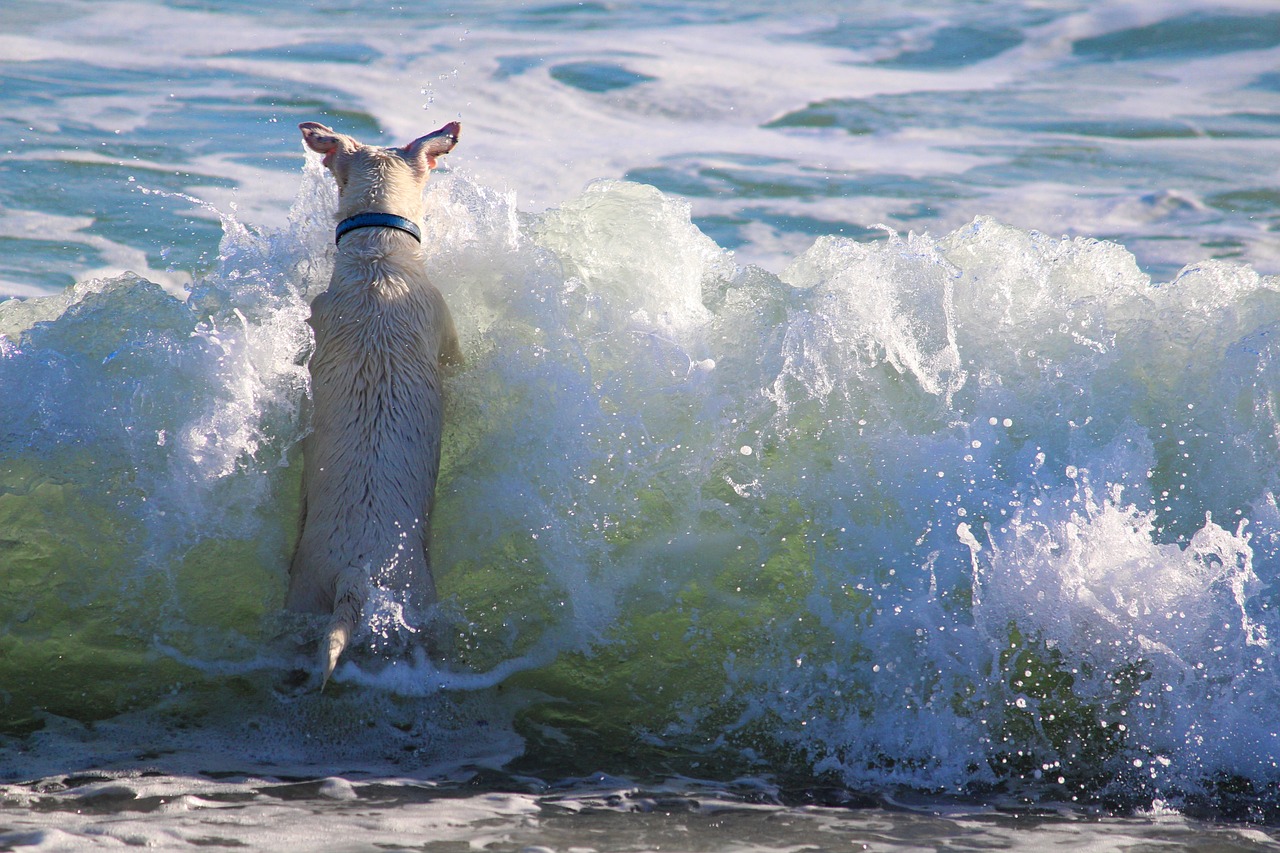
The Role of VR in Military Training
Virtual reality (VR) is not just a buzzword in the tech world; it’s a game changer for military training. Imagine stepping into a world where you can experience the chaos of a battlefield or the tranquility of a survival scenario without ever leaving a training facility. With VR, soldiers can immerse themselves in lifelike simulations that replicate some of the most challenging environments they may face on actual missions. This revolutionary technology allows military personnel to practice and refine their skills in a safe, controlled setting, drastically reducing the risks associated with real-world training scenarios.
One of the primary advantages of VR in military training is the ability to create diverse scenarios that are difficult, if not impossible, to replicate in traditional training environments. For instance, soldiers can train for extreme weather conditions, such as blizzards or sandstorms, which would be challenging to simulate outdoors. Furthermore, they can engage in complex combat scenarios that test their tactical decision-making skills under pressure. This level of immersion helps soldiers develop a deeper understanding of their roles and responsibilities, preparing them for the unpredictable nature of warfare.
Moreover, VR training can be tailored to meet the specific needs of different military branches and units. For example, a unit focused on urban warfare can engage in simulations that mimic city landscapes, complete with realistic obstacles and potential threats. This customization ensures that each soldier receives training that is relevant to their specific mission objectives, enhancing their overall readiness.
In addition, VR technology facilitates a more engaging learning experience. Traditional training methods can often be repetitive and mundane, leading to disengagement among soldiers. However, with VR, the training becomes an exciting adventure, capturing the attention of even the most seasoned personnel. This heightened engagement not only makes training more enjoyable but also improves knowledge retention and skill mastery.
As we look to the future, the integration of VR into military training programs represents a significant shift in how soldiers prepare for their missions. By harnessing the power of technology, military organizations can ensure their personnel are better equipped to handle the complexities of modern warfare. The benefits of VR training extend beyond individual soldiers; they also contribute to the overall effectiveness and readiness of military units as a whole. In the high-stakes world of military operations, this level of preparedness can make all the difference.
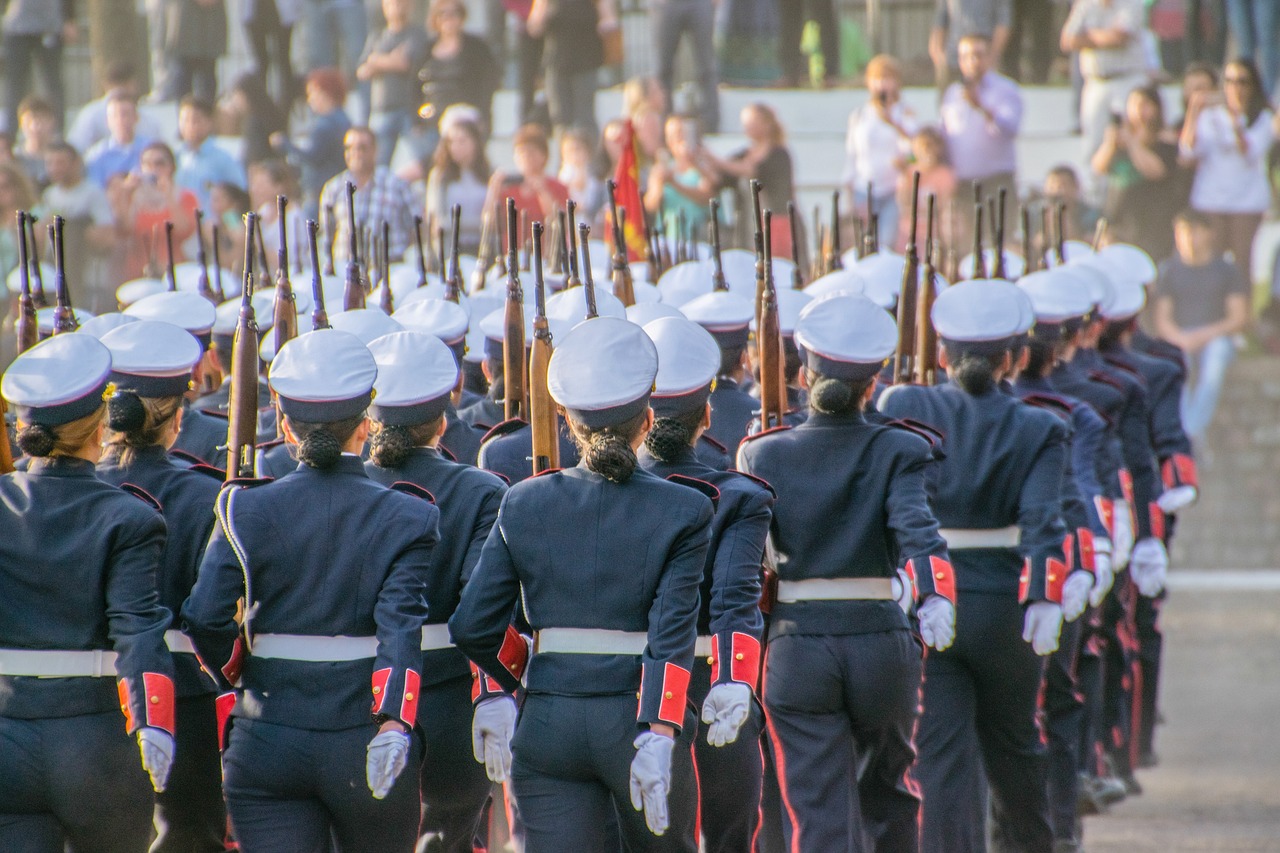
Benefits of Simulating Extreme Environments
Simulating extreme environments through virtual reality (VR) technology is a game-changer for military training. Imagine being able to prepare for the harshest conditions without ever stepping outside. This immersive experience allows soldiers to face scenarios that would be impossible or too dangerous to replicate in real life. From extreme weather conditions to intense combat situations, VR training enhances adaptability and resilience, equipping military personnel with the skills they need to thrive in high-pressure environments.
One of the most significant benefits of VR simulations is the ability to expose soldiers to a variety of challenging conditions. For instance, they can experience:
- Extreme weather: Training in torrential rain, blinding snow, or scorching heat can help soldiers understand how to operate effectively in adverse conditions.
- Combat scenarios: Simulating urban warfare or guerrilla tactics prepares soldiers for the unpredictability of real combat.
- Survival situations: Learning how to navigate and survive in hostile terrains can be crucial for mission success.
These simulations not only prepare soldiers for the physical challenges they may face but also sharpen their mental acuity. By immersing them in lifelike scenarios, VR training enhances their situational awareness, allowing them to recognize threats and make informed decisions swiftly. In the heat of battle, every second counts, and the ability to process information rapidly can mean the difference between success and failure.
Moreover, VR training fosters a sense of camaraderie among soldiers. They can engage in collaborative training sessions, where they work together to solve complex problems and strategize in real-time. This teamwork is essential, as military operations often require seamless communication and collaboration under pressure. By practicing in a virtual environment, soldiers can build trust and improve their interpersonal skills, which are just as vital as their technical abilities.
In addition to enhancing skills and teamwork, VR training offers a safe environment for soldiers to practice stress management techniques. Experiencing high-stress situations in a controlled setting allows them to develop coping strategies that can be applied during real missions. This preparation helps them maintain composure and focus, even when the stakes are at their highest.
Lastly, the cost-effectiveness of VR training cannot be overlooked. Traditional training methods often involve significant expenses related to travel, equipment, and facility maintenance. In contrast, VR training can be conducted at a fraction of the cost while providing a safer and more controlled training environment. This financial benefit allows military organizations to allocate resources more efficiently, ultimately enhancing overall operational readiness.
Q: How does VR training differ from traditional training methods?
A: VR training provides immersive, realistic simulations that allow soldiers to practice in a safe environment, reducing risks associated with real-world training scenarios.
Q: Can VR training fully replace traditional training?
A: While VR training offers numerous benefits, it is most effective when combined with traditional training methods, providing a comprehensive approach to skill development.
Q: How does VR enhance situational awareness?
A: VR immerses soldiers in lifelike scenarios, helping them recognize threats and make quick decisions, ultimately improving their performance in the field.
Q: Is VR training cost-effective?
A: Yes, implementing VR training can significantly reduce costs associated with travel, equipment, and facility maintenance, while providing a safer training environment.
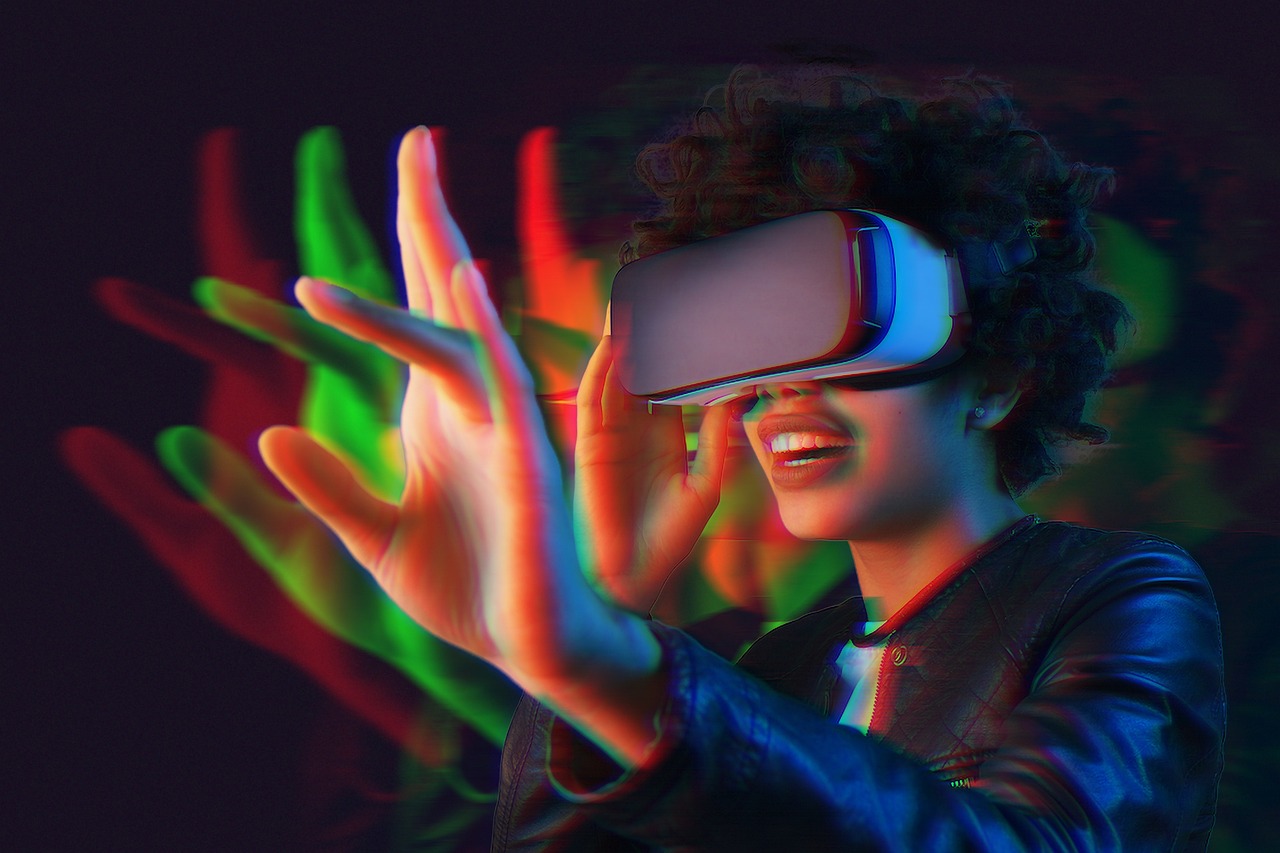
Enhancing Situational Awareness
In the fast-paced world of military operations, situational awareness is not just a buzzword; it's a critical skill that can mean the difference between success and failure. Imagine being in the midst of a chaotic battlefield, where every second counts, and the stakes are sky-high. This is where virtual reality (VR) comes into play, acting as a robust training tool that helps soldiers sharpen their situational awareness before they even step foot into the real thing.
VR technology immerses soldiers in lifelike scenarios, allowing them to experience the sights, sounds, and even the stresses of extreme environments. This immersive experience is crucial because it trains the brain to process information quickly and accurately. For example, when a soldier is placed in a VR simulation of a combat zone, they are faced with various stimuli that require immediate attention. The ability to recognize threats, assess situations, and make informed decisions in real-time is honed through repeated exposure to these scenarios.
But how exactly does VR enhance situational awareness? Here are some key aspects:
- Realistic Threat Recognition: By simulating a variety of combat scenarios, soldiers learn to identify potential threats more effectively. This training helps them differentiate between friend and foe, assess the urgency of threats, and respond accordingly.
- Decision-Making Under Pressure: VR environments can replicate high-stress situations, forcing soldiers to make split-second decisions. This practice is invaluable, as it conditions them to remain calm and focused when it matters most.
- Environmental Adaptability: In VR, soldiers can train in diverse terrains and weather conditions, allowing them to adapt their strategies based on the environment. Whether it’s a snowy mountain or a dense jungle, the ability to adjust tactics is crucial for mission success.
Moreover, the feedback mechanism integrated into VR training systems is a game-changer. After each simulation, soldiers receive immediate feedback on their performance, which allows them to reflect on their actions and improve upon them. This iterative learning process not only boosts confidence but also solidifies the skills necessary for real-world applications.
In summary, enhancing situational awareness through VR is like giving soldiers a superpower. They gain the ability to see beyond the obvious, react swiftly to threats, and make decisions that could save lives. With each training session, they are better prepared for the uncertainties of the battlefield, ensuring they can handle whatever comes their way.
- What is situational awareness? Situational awareness refers to the ability to perceive, understand, and respond to the environment around you, particularly in high-stakes situations.
- How does VR improve situational awareness? VR creates immersive training scenarios that replicate real-world environments, allowing soldiers to practice threat recognition, decision-making, and adaptability under pressure.
- Is VR training effective compared to traditional methods? Yes, VR training is often more effective as it provides realistic simulations without the risks associated with live training, and allows for immediate feedback and assessment.

Realistic Scenario Training
In the realm of military training, the importance of cannot be overstated. Imagine a soldier preparing for a mission that involves navigating through a dense jungle or a war-torn city. The ability to practice these scenarios in a controlled environment is invaluable. Virtual reality (VR) technology allows military personnel to immerse themselves in lifelike settings where they can experience the sights, sounds, and even the stress of real combat situations. This immersion is not just about visuals; it’s about creating a holistic experience that prepares soldiers for the unpredictability of real-world operations.
One of the standout features of VR training is its capability to simulate a wide array of environments and scenarios. These can range from extreme weather conditions, such as blizzards or sandstorms, to high-stakes combat situations where split-second decisions can mean the difference between life and death. For example, a soldier might find themselves in a VR simulation where they must navigate through an urban area under sniper fire, making tactical decisions based on the immediate threats around them.
Furthermore, the diversity of scenarios that can be created in VR is virtually limitless. This flexibility allows military trainers to design exercises that are tailored to the specific needs of their units. can include:
- Urban combat simulations
- Search and rescue missions in hostile territories
- Humanitarian assistance operations in disaster-stricken areas
- Counter-terrorism operations in complex environments
These scenarios not only enhance tactical skills but also foster critical thinking and adaptability among soldiers. They learn to assess situations rapidly, prioritize threats, and execute their training under pressure, all within a safe and controlled environment. The ability to repeat these scenarios multiple times allows soldiers to refine their strategies and improve their responses to various challenges.
Moreover, the integration of VR technology into realistic scenario training promotes a culture of continuous learning. After each simulation, soldiers can receive immediate feedback on their performance, allowing them to understand what worked and what didn’t. This iterative process of learning helps in building a more resilient and capable military force.
In conclusion, powered by VR technology is revolutionizing how military personnel prepare for the complexities of modern warfare. By providing a safe, immersive, and diverse training environment, VR not only enhances tactical skills but also prepares soldiers mentally and emotionally for the challenges they will face in the field.
Q1: How does VR training differ from traditional training methods?
A1: VR training offers immersive experiences that replicate real-life scenarios, allowing soldiers to practice without the risks associated with traditional methods. It also provides immediate feedback and can simulate a wider range of environments.
Q2: Can VR training be customized for specific missions?
A2: Yes! VR technology allows for the creation of tailored scenarios that meet the specific needs of military units, enhancing their preparedness for unique missions.
Q3: Is VR training cost-effective compared to traditional training?
A3: Absolutely! VR training can significantly reduce costs related to travel, equipment, and facility maintenance while providing a safer training environment.
Q4: How does VR training help with stress management?
A4: By simulating high-stress environments, VR training helps soldiers develop techniques to manage stress, enabling them to maintain composure during real-life challenges.
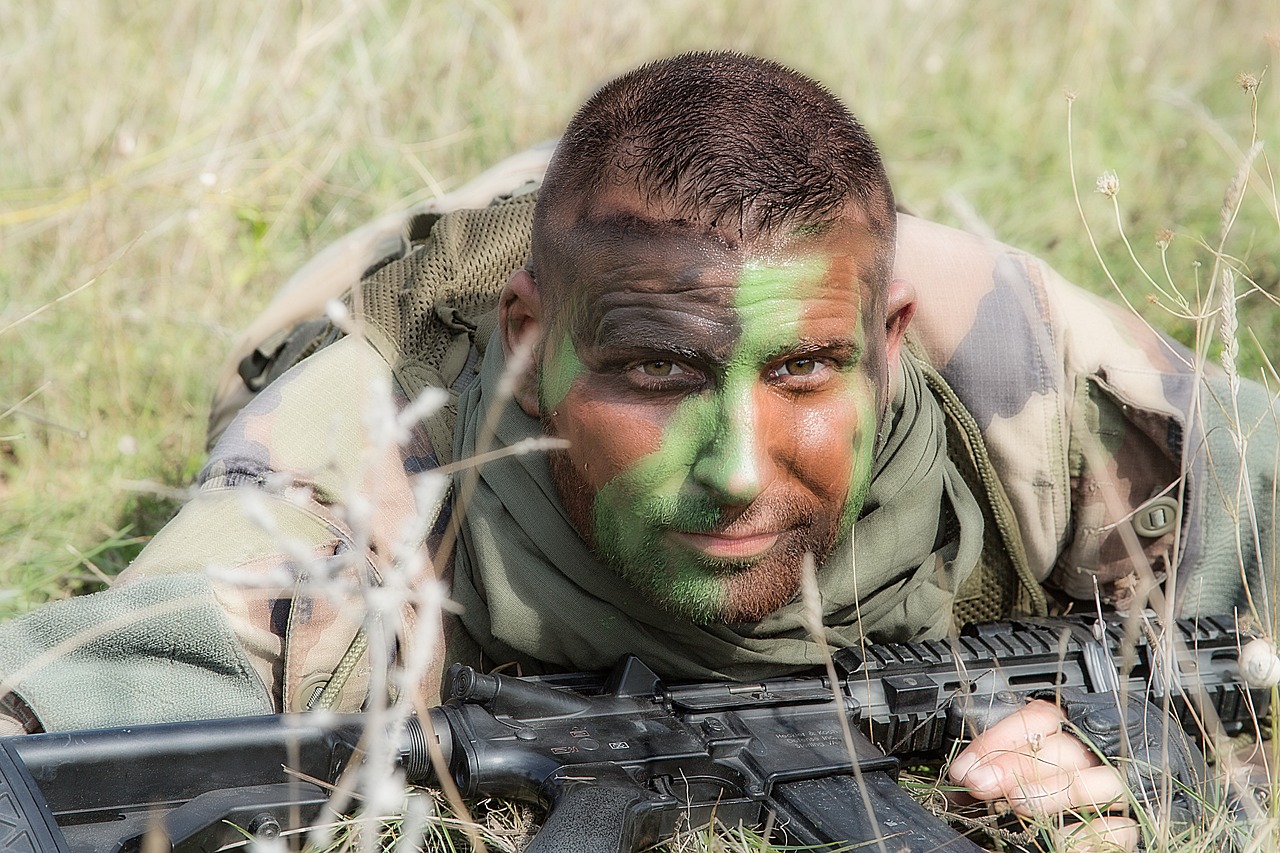
Stress Management Techniques
In the high-stakes world of military training, stress management is not just an optional skill; it's a critical component that can mean the difference between life and death. When soldiers are placed in simulated high-stress environments, they are given a unique opportunity to confront and manage their stress responses in a controlled setting. This practice is akin to a firefighter training in a controlled burn. Just as firefighters learn to remain calm amidst chaos, military personnel can develop their own coping mechanisms through VR training.
One of the most effective techniques is controlled breathing. In a VR simulation, soldiers can practice various breathing exercises that help lower heart rates and reduce anxiety. Imagine standing in the middle of a battlefield scenario, with sounds of gunfire and explosions all around. The ability to take a deep breath, center oneself, and focus on the task at hand can be a game-changer. Soldiers can learn to recognize their physiological responses to stress and apply these techniques in real-time.
Moreover, VR training allows for the integration of mindfulness practices. Soldiers can engage in scenarios that require them to pause, assess their surroundings, and make deliberate choices rather than reacting impulsively. This practice encourages a state of awareness that can be invaluable during actual missions. It’s like being a chess player in a high-pressure tournament; every move counts, and the ability to think several steps ahead can lead to victory.
Additionally, team-building exercises in VR can foster a sense of camaraderie and support among soldiers. When they train together in these simulated environments, they learn to rely on one another, share coping strategies, and build resilience as a unit. This aspect of training is crucial, as a soldier's mental health can significantly impact their performance and the well-being of their team. Think of it as a band of brothers, each member supporting the other during the toughest of times.
To further enhance these techniques, feedback mechanisms can be integrated into VR training. After completing a simulation, soldiers can receive real-time assessments of their stress management skills. This feedback loop allows them to understand what worked, what didn’t, and how to improve. It's like having a coach on the sidelines, ready to provide advice and strategies for the next round. By continuously refining their approach, soldiers become better equipped to handle the pressures of combat.
In summary, the incorporation of stress management techniques in VR training not only prepares soldiers for the physical challenges they may face but also equips them with the mental fortitude needed to thrive in high-pressure situations. Just as a diamond is formed under pressure, so too are these soldiers, emerging stronger and more capable of facing the realities of their missions.
- How does VR training compare to traditional training methods?
VR training offers a safe, controlled environment where soldiers can practice without the risks associated with real-world scenarios. It enhances their skills and prepares them for various challenges. - Can VR training be used for all military branches?
Yes, VR training can be tailored to meet the needs of various military branches, providing relevant scenarios for each specific environment and mission type. - What are the costs associated with implementing VR training?
While initial setup costs can be high, VR training can save money in the long run by reducing travel expenses, equipment costs, and facility maintenance. - Is VR training effective for stress management?
Absolutely! VR training allows soldiers to practice stress management techniques in realistic scenarios, helping them develop skills to maintain composure in high-pressure situations.
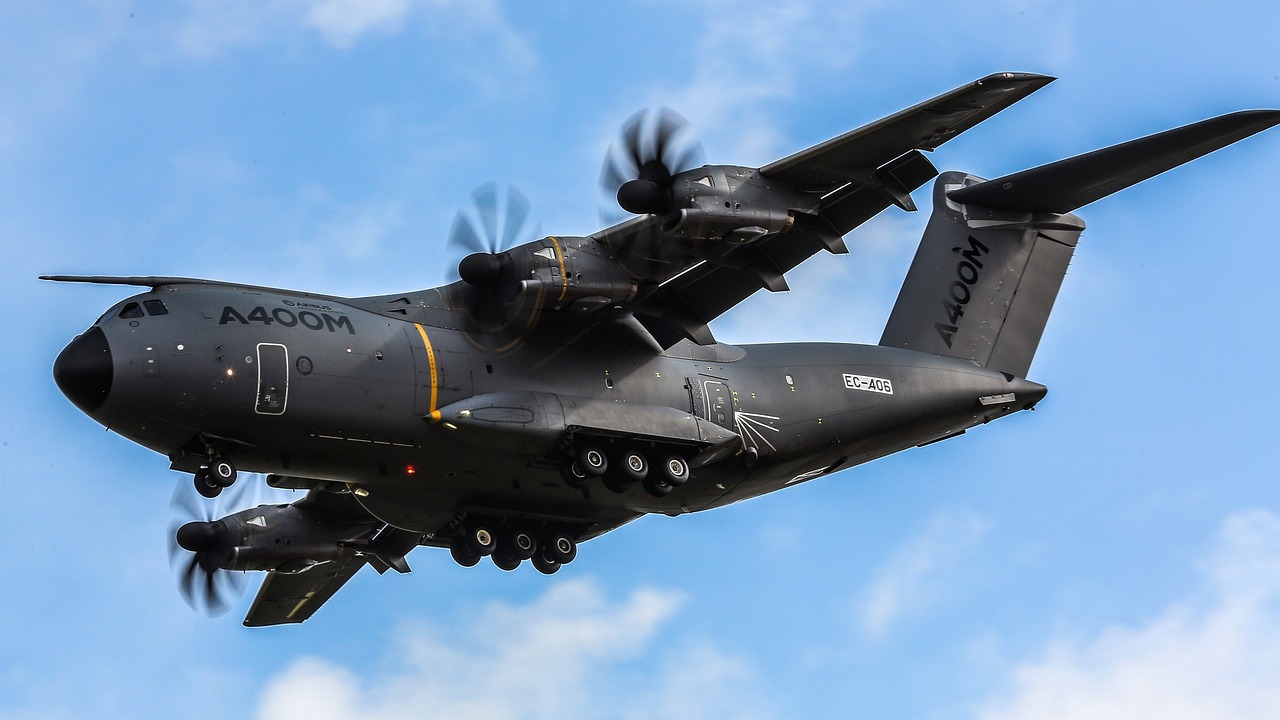
Cost-Effectiveness of VR Training
When it comes to military training, the cost-effectiveness of virtual reality (VR) is nothing short of revolutionary. Traditional training methods often require extensive resources, including travel expenses, equipment costs, and facility maintenance. In contrast, VR training drastically reduces these costs while providing a safe and controlled environment for soldiers to hone their skills. Imagine being able to conduct realistic training exercises without the need for physical travel to distant training sites—this is where VR shines!
One of the most significant advantages of VR training is its ability to simulate a wide range of scenarios without the associated risks and costs of real-world training. For instance, soldiers can practice in environments that mimic extreme weather conditions, urban combat, or even disaster response without the need for expensive setups or logistics. This not only saves money but also allows for more frequent and varied training sessions, ultimately leading to better-prepared soldiers.
Additionally, the reduction in equipment costs is a game-changer. Traditional training often requires specialized gear, vehicles, and weaponry that can be costly to maintain and operate. With VR, these physical items can be replaced by virtual replicas, significantly lowering the financial burden on military budgets. Furthermore, VR training can be easily updated with the latest technology and tactics, ensuring that soldiers are always learning with the most current tools available.
To illustrate the financial benefits, consider the following table that compares traditional training costs with VR training costs:
| Training Method | Estimated Cost per Soldier | Additional Notes |
|---|---|---|
| Traditional Training | $5,000 - $10,000 | Includes travel, equipment, and facilities |
| VR Training | $1,000 - $3,000 | Lower costs due to reduced travel and equipment needs |
Moreover, the flexibility of VR training allows military units to conduct training sessions at any time and place, which is a significant advantage over traditional methods that often require specific locations and schedules. This flexibility not only enhances training frequency but also allows for last-minute adjustments to training plans based on emerging needs or current events.
In summary, the cost-effectiveness of VR training is a compelling reason for its adoption in military training programs. By reducing expenses associated with traditional methods, enhancing training frequency, and providing a safer environment, VR technology is not just a futuristic concept—it's a practical solution that can lead to better-prepared military personnel.
- What are the main advantages of using VR in military training? VR provides realistic simulations, reduces training costs, enhances safety, and allows for flexible training schedules.
- How does VR training improve soldier readiness? By immersing soldiers in lifelike scenarios, they can practice decision-making and tactical skills in a controlled environment, leading to better performance in real missions.
- Can VR training replace traditional training methods entirely? While VR training is highly effective, it is best used in conjunction with traditional methods to provide a comprehensive training experience.

Integration of VR with Traditional Training
In the ever-evolving landscape of military training, the integration of Virtual Reality (VR) with traditional methods has emerged as a game-changer. Imagine stepping into a training environment where the boundaries of reality blur, allowing soldiers to engage in hyper-realistic scenarios while still benefiting from the hands-on experience that traditional training offers. This hybrid approach not only enhances the learning experience but also prepares military personnel for the complexities of modern warfare.
One of the significant advantages of combining VR with traditional training is the ability to create a multi-faceted training program. Traditional methods often rely on physical drills, simulations, and classroom learning. However, when VR is introduced, it adds a layer of immersion that is simply unattainable through conventional means. For example, soldiers can practice tactical maneuvers in a virtual cityscape that mimics real-world environments, allowing them to visualize and execute strategies without the logistical constraints of physical training grounds.
Moreover, VR training can replicate various combat scenarios that soldiers may face in the field. This includes everything from urban warfare to extreme weather conditions. By experiencing these scenarios in a controlled environment, soldiers can develop critical skills such as decision-making, teamwork, and adaptability. They can learn to respond to threats and challenges in real-time, honing their instincts and reactions in a way that traditional training alone might not achieve.
Another vital aspect of this integration is the emphasis on collaborative training environments. With VR technology, multiple soldiers can engage in training sessions together, even if they are physically located in different places. This fosters a sense of teamwork and communication that is crucial for successful military operations. Picture a squadron working together to navigate a virtual battlefield, strategizing and executing plans as if they were right beside each other. This shared experience not only builds camaraderie but also enhances their ability to function as a cohesive unit under pressure.
Of course, the integration of VR with traditional training methods is not without its challenges. It requires investment in technology, training personnel to use these systems effectively, and ensuring that the virtual experiences are realistic and relevant. However, the potential benefits far outweigh these hurdles. By embracing this innovative approach, military organizations can create a more effective training regimen that prepares soldiers for the unpredictable nature of their duties.
In summary, the fusion of VR with traditional training methods represents a significant leap forward in military preparedness. It allows soldiers to immerse themselves in realistic scenarios, collaborate with teammates, and hone their skills in a safe yet challenging environment. As technology continues to advance, the possibilities for enhancing military training through VR are virtually limitless.
- What is the main advantage of using VR in military training?
The primary advantage is the ability to create realistic, immersive training scenarios that soldiers can experience without the risks associated with real-world training. - Can VR training replace traditional methods?
No, VR is meant to complement traditional training methods, enhancing the overall training experience rather than replacing it. - How does VR improve teamwork among soldiers?
VR allows soldiers to train together in a shared virtual space, improving communication and collaboration skills essential for military operations. - Is VR training cost-effective?
Yes, it can significantly reduce costs related to travel, equipment, and facility maintenance associated with traditional training methods.

Collaborative Training Environments
In the ever-evolving landscape of military training, powered by virtual reality (VR) are emerging as a game-changer. Imagine a scenario where soldiers from different units, regardless of their geographical locations, can come together in a shared virtual space, working side by side as if they were in the same room. This is not just a futuristic dream; it’s the reality that VR technology is making possible. By simulating real-world operations in a virtual context, soldiers can practice their teamwork and communication skills, essential for executing successful missions.
One of the most significant advantages of VR in collaborative training is the ability to conduct joint exercises that mirror the complexities of actual combat situations. For instance, soldiers can engage in tactical drills where they must coordinate their movements, share information, and make split-second decisions as a cohesive unit. This kind of training fosters a sense of camaraderie and trust among team members, which is crucial when lives are on the line. The immersive nature of VR also heightens the realism of these scenarios, making the training experience more impactful.
Furthermore, VR allows for the integration of advanced analytics and real-time feedback during these collaborative sessions. As soldiers navigate through their training, instructors can monitor their performance, providing immediate insights into their strengths and areas needing improvement. This feedback loop is invaluable for honing skills and ensuring that each soldier is mission-ready. For example:
| Skill Area | Feedback Type | Improvement Action |
|---|---|---|
| Communication | Real-time audio analysis | Enhanced clarity in commands |
| Decision Making | Scenario outcome analysis | Adjust strategies based on feedback |
| Team Coordination | Movement tracking | Refine tactical formations |
In essence, the collaborative aspect of VR training not only prepares soldiers for individual tasks but also emphasizes the importance of working together as a unit. The ability to rehearse complex operations in a safe, controlled environment reduces the risk of errors in real-life situations. Moreover, it cultivates a culture of continuous learning and adaptation, essential traits for modern military forces.
As we move forward, the integration of collaborative training environments into military curricula will likely expand, leading to more sophisticated simulations and enhanced operational readiness. The question isn't whether VR will play a role in military training; it's how effectively we can harness its potential to prepare our soldiers for the challenges they will face on the battlefield.
- What is VR training in the military? VR training involves using virtual reality technology to simulate realistic combat scenarios, allowing soldiers to practice their skills in a safe environment.
- How does VR improve teamwork among soldiers? VR creates immersive environments where soldiers can train together, enhancing communication and coordination skills essential for successful missions.
- Are there cost benefits to using VR for military training? Yes, VR training can significantly reduce costs associated with traditional training methods, such as travel and equipment expenses, while providing a safer training environment.
- Can VR training be integrated with traditional methods? Absolutely! Combining VR with traditional training creates a comprehensive approach that enhances the overall training experience for soldiers.

Feedback and Assessment Tools
In the realm of military training, play a crucial role in honing the skills of soldiers. With the integration of virtual reality (VR), these tools have become more sophisticated, allowing for real-time evaluations that were previously unimaginable. Imagine being in a high-pressure situation, where every second counts, and having the ability to receive immediate feedback on your performance. This is precisely what VR technology offers, transforming the training landscape.
One of the most significant advantages of VR feedback tools is their ability to provide objective assessments. Traditional training methods often rely on subjective evaluations, which can vary from one instructor to another. However, VR systems utilize advanced algorithms and data analytics to track performance metrics, such as reaction time, accuracy, and decision-making speed. This data is then compiled into comprehensive reports that highlight strengths and pinpoint areas for improvement. For instance, a soldier may be evaluated on their response to a simulated ambush, with feedback detailing how quickly they identified the threat and the effectiveness of their tactical response.
Additionally, these tools facilitate a more personalized training experience. Soldiers can engage in tailored scenarios based on their individual needs and skill levels. This customization ensures that each soldier can focus on specific challenges they may face in real-life situations. For example, if a soldier struggles with high-stress decision-making, the VR system can create scenarios that specifically target this skill, providing repeated practice until proficiency is achieved. The beauty of this approach lies in its adaptability; as soldiers progress, the difficulty of the simulations can be adjusted to continually challenge them.
Moreover, the incorporation of collaborative feedback mechanisms fosters a sense of camaraderie among soldiers. In many VR training programs, multiple participants can engage in the same scenario, allowing them to work together and provide feedback to one another. This collaboration not only enhances teamwork skills but also encourages open communication, which is vital in military operations. Soldiers learn to rely on each other, share insights, and develop strategies collectively, creating a more cohesive unit when it comes time for real-world deployment.
To illustrate the effectiveness of these feedback and assessment tools, consider the following table that outlines key performance indicators (KPIs) tracked during a VR training session:
| Performance Metric | Description | Importance |
|---|---|---|
| Reaction Time | Time taken to respond to a simulated threat | Critical for survival in combat situations |
| Accuracy | Precision of tactical decisions made | Directly impacts mission success |
| Decision-Making Speed | Speed at which effective choices are made | Essential for maintaining the initiative |
| Team Coordination | Effectiveness of communication and teamwork | Vital for operational success |
In conclusion, the integration of feedback and assessment tools in VR training not only enhances soldiers' skills but also equips them with the knowledge and confidence necessary to excel in high-stakes environments. By providing objective data, personalized training experiences, and fostering collaboration, these tools are redefining what it means to be prepared for the complexities of modern warfare.
- How does VR training differ from traditional training methods?
VR training offers immersive and interactive scenarios that replicate real-world challenges, allowing for immediate feedback and personalized learning experiences. - Can VR training be used for all military branches?
Yes, VR training can be adapted for various military branches, addressing the unique challenges and skills required for each. - What are the costs associated with implementing VR training?
While initial setup costs can be high, VR training can ultimately save money by reducing travel and equipment expenses associated with traditional training methods. - How does VR training improve soldier readiness?
By providing realistic simulations and real-time assessments, VR training enhances soldiers' situational awareness, decision-making skills, and overall preparedness for deployment.
Frequently Asked Questions
- What is virtual reality (VR) training in the military?
Virtual reality training in the military involves using advanced VR technology to create immersive simulations that replicate extreme environments. This allows soldiers to practice their skills in a safe setting, preparing them for real-life scenarios without the associated risks.
- How does VR enhance situational awareness for soldiers?
VR enhances situational awareness by immersing soldiers in lifelike scenarios where they must recognize threats and make split-second decisions. This training helps them develop the ability to assess their surroundings accurately, leading to improved performance in high-stakes situations.
- What are the benefits of simulating extreme environments?
Simulating extreme environments helps soldiers build adaptability and resilience. They can experience challenging conditions such as harsh weather, combat situations, and survival challenges, which are crucial for their readiness during actual missions.
- Can VR training reduce costs associated with traditional military training?
Absolutely! Implementing VR training can significantly lower costs related to travel, equipment, and facility maintenance, while also providing a safer training environment. This makes it a cost-effective alternative to traditional training methods.
- How does VR integrate with traditional training methods?
VR can be combined with traditional training methods to create a comprehensive approach. This integration allows soldiers to gain hands-on experience while benefiting from the immersive capabilities of virtual reality, enhancing their overall training experience.
- What role do collaborative training environments play in VR?
Collaborative training environments in VR enable multiple soldiers to train together in a shared virtual space. This fosters teamwork and communication skills, which are essential for successful military operations, as soldiers learn to work together effectively in high-pressure situations.
- How does feedback and assessment work in VR training?
VR training incorporates real-time feedback and assessment tools, allowing soldiers to identify areas for improvement and track their progress over time. This dynamic feedback loop enhances their overall readiness for deployment by ensuring they are continuously improving their skills.



















